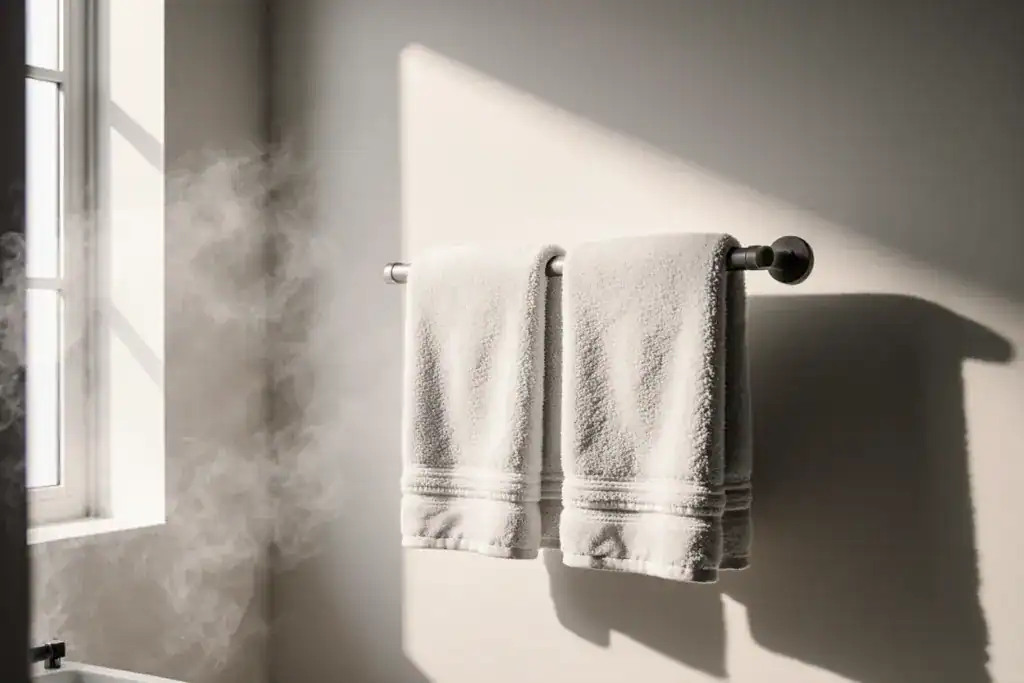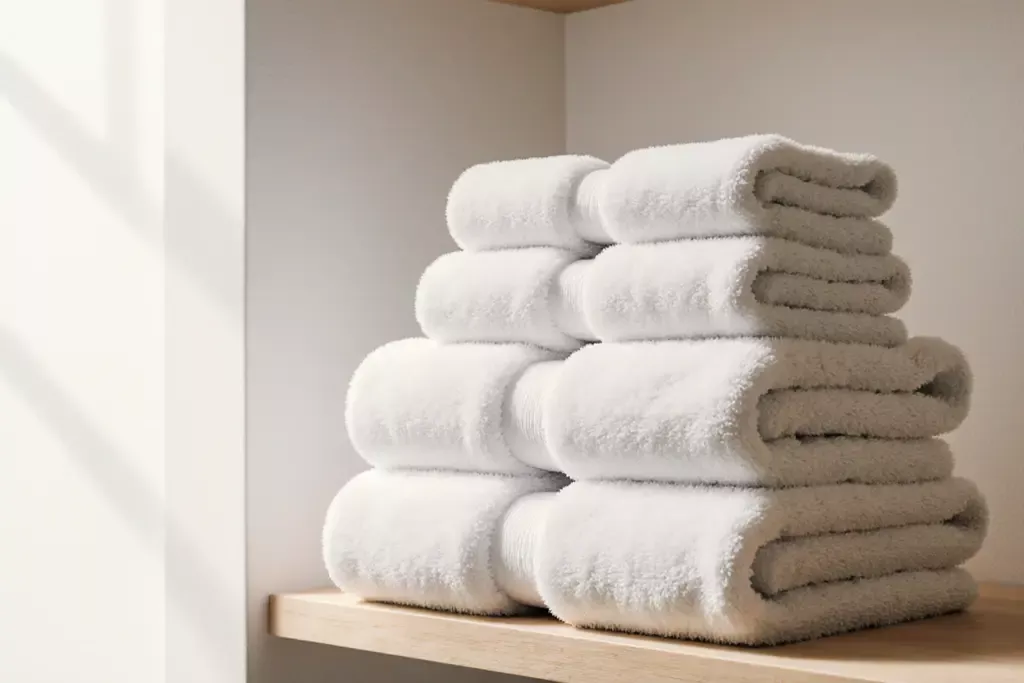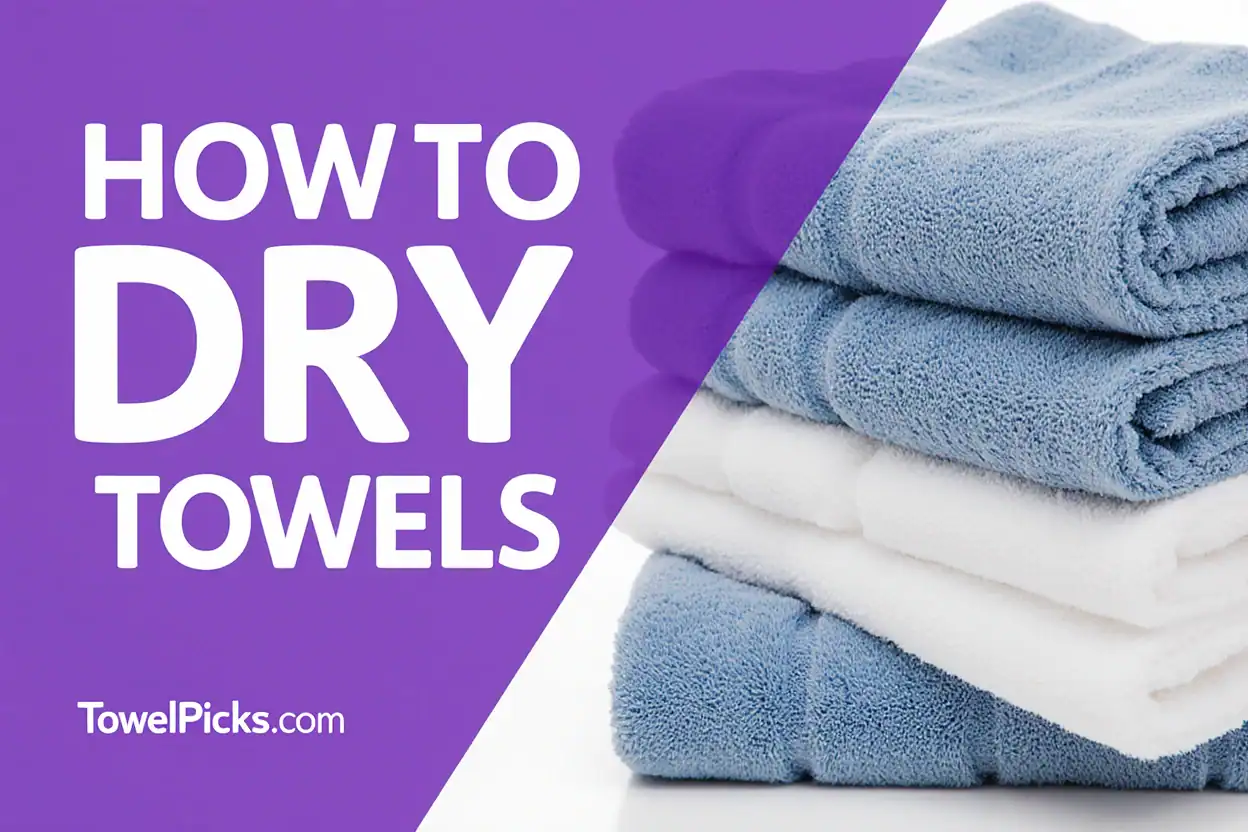Nothing ruins a fluffy towel faster than drying it the wrong way 🛁. Knowing how to dry towels properly is essential to maintain their softness, absorbency, and lifespan. Whether it’s your bath, kitchen, or beach towels, adopting the right drying methods ensures every towel feels luxurious and lasts longer.
| Key Point | Summary |
|---|---|
| Proper Drying | Keep towels soft and extend their lifespan |
| Fabric Awareness | Different towels require different drying methods |
| Care Techniques | Use correct washing and drying practices to avoid damage |

Why Proper Towel Drying Matters
Towels are an everyday essential, but many people unknowingly ruin them through improper drying. Over time, mistakes like high-heat drying or leaving damp towels in piles can make them stiff, rough, or smelly.
Benefits of proper towel drying include:
- Enhanced softness: Towels stay plush and comfortable.
- Longer lifespan: Less wear and tear from harsh drying.
- Odor prevention: Reduces the risk of musty smells.
- Better absorbency: Preserves the towel’s ability to soak up water efficiently.
Types of Towels and Their Drying Needs
Different towels need different care based on fabric and thickness:
- Bath Towels: Usually cotton or bamboo; gentle drying keeps them fluffy.
- Kitchen Towels: Cotton or microfiber; dry quickly to prevent bacteria.
- Beach Towels: Thicker terry cloth; must be completely dry to avoid mildew.
Pro Tip: Always check the care label before drying—it’s your towel’s instruction manual for longevity 🌿.

Common Mistakes in Towel Drying
Even well-intentioned drying can go wrong. Watch out for these mistakes:
- Over-drying: Leads to rough fibers and stiff texture.
- High heat settings: Can weaken fibers, especially cotton or bamboo blends.
- Leaving damp towels in dryer: Causes mildew and unpleasant odors.
- Mixing with other laundry: Can transfer lint and reduce towel fluffiness.
How to Choose Towels That Stay Soft
Proper drying starts with the right towel. Here’s what to look for:
| Feature | Recommendation |
|---|---|
| Material | 100% cotton or bamboo for plushness and absorbency |
| Weight (GSM) | 400–600 GSM for soft yet durable towels |
| Brand | Choose reputable brands with quality fabric reviews |
| Size | Larger towels may require longer drying time; plan accordingly |
Step-by-Step Guide: How to Dry Towels Properly
1. Washing Prep
- Wash towels separately to avoid lint transfer.
- Use mild detergent and avoid fabric softeners—they leave residue that reduces absorbency.
- Optional: Add a half cup of white vinegar to maintain softness naturally.
2. Drying Methods
| Method | Pros | Cons |
|---|---|---|
| Machine Drying | Fast, convenient, kills bacteria | Risk of overdrying, heat damage |
| Air Drying | Eco-friendly, preserves fabric | Slower, towels may feel stiff initially |
Tips for Machine Drying:
- Use medium heat to protect fibers.
- Remove towels while slightly damp to avoid stiffness.
- Toss in dryer balls or clean tennis balls to fluff fibers.
Tips for Air Drying:
- Shake towels out before hanging to reduce wrinkles.
- Hang in a well-ventilated area or outside in sunlight.
- Once dry, toss in dryer for 5–10 minutes to restore softness if needed.
Extra Care Tips for Soft Towels
- Separate new towels: First wash separately to prevent color bleeding.
- Avoid fabric softeners: They coat fibers and decrease absorbency.
- Occasional vinegar rinse: Restores towel fluffiness naturally.
- Proper storage: Fold or roll towels loosely to maintain shape.
- Regular fluffing: Give towels a shake before each use to keep fibers airy.
Real-World Comparisons: Machine vs. Air Drying
- Machine Drying: Perfect for speed and convenience, especially for busy households.
- Air Drying: Eco-friendly and gentler on fabrics but may require extra steps to soften towels.
Decision guide:
- If you value speed and convenience, machine drying is best.
- If you prioritize longevity and eco-conscious care, air drying is ideal.
FAQs: Common Towel Drying Questions

How often should I wash towels?
Every 3–4 uses is ideal for bath towels; kitchen towels may need more frequent washing.
Can I use softener on towels?
It’s best to avoid softeners; they reduce absorbency over time.
Is air drying effective?
Yes! Air drying works well but may require a short machine fluff to restore softness.
Should I dry towels with other laundry?
Dry towels separately to avoid lint transfer and uneven drying.
What temperature is best for drying towels?
Medium heat keeps towels fluffy without damaging fibers.
Pro Tips & Tricks
- Toss a baking soda rinse in laundry to maintain absorbency.
- For beach towels, hang outside flat to prevent mildew in folds.
- Store towels in a cool, dry cabinet to prevent lingering odors.
- Rotate towel usage so all towels age evenly and stay soft longer.
Conclusion: Keep Your Towels Fluffy for Years
Knowing how to dry towels properly is more than a small household tip—it’s a way to extend the life, comfort, and absorbency of your everyday essentials. With the right washing and drying methods, plus mindful towel care, you’ll enjoy soft, fresh towels every day. 🛁🌿
Take these tips, put them into practice, and say goodbye to rough, musty towels forever.

